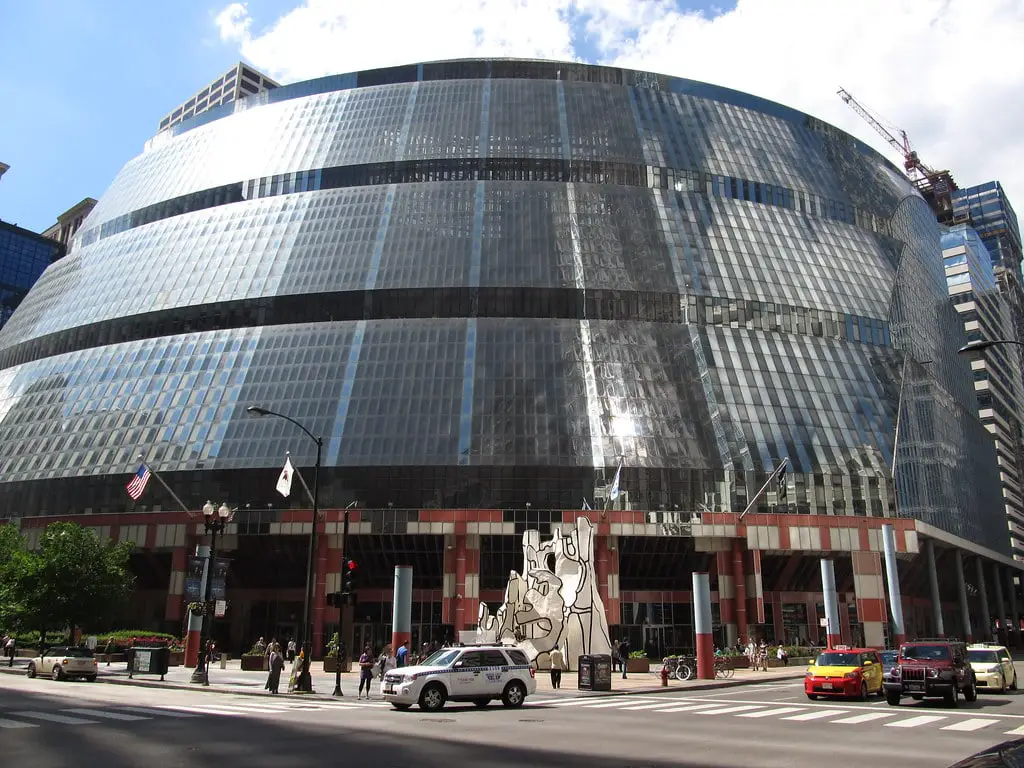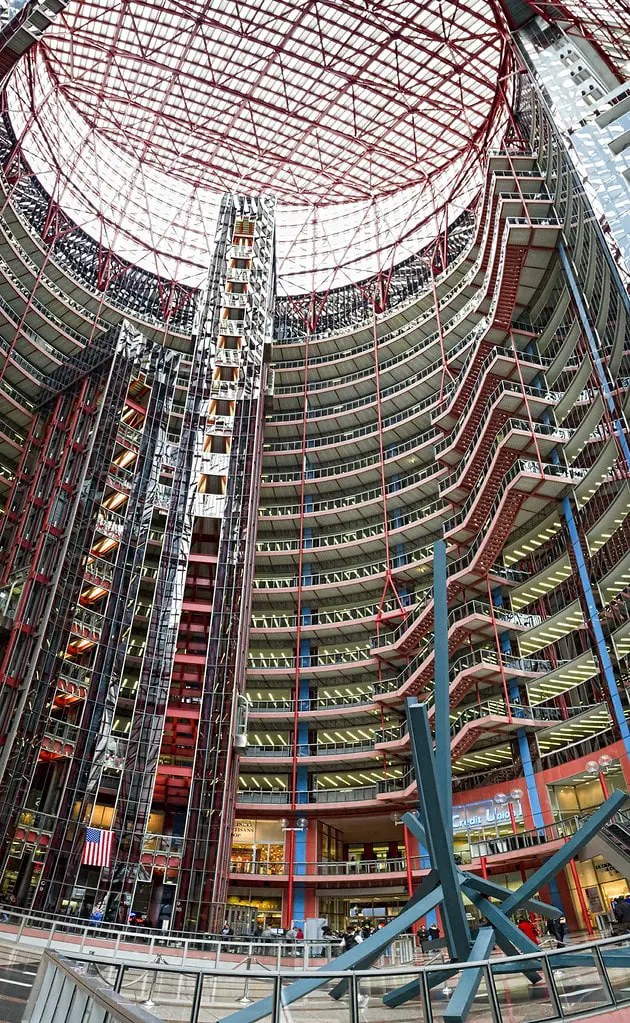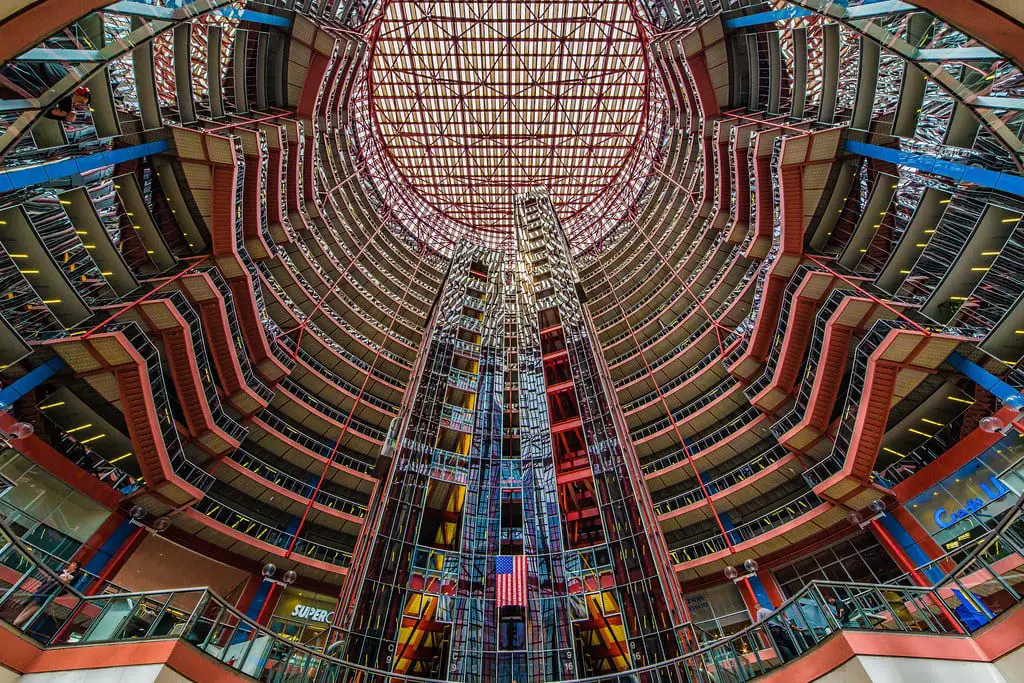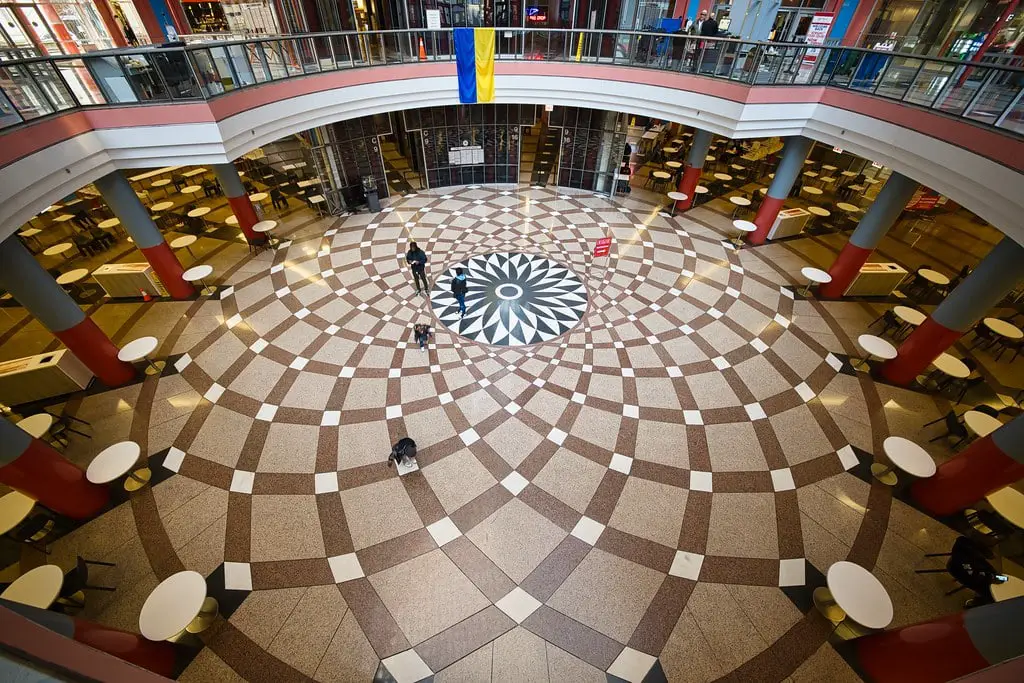The Architectural Marvel
The James R. Thompson Center, designed by the late Helmut Jahn, is a testament to postmodern architecture. Its all-glass exterior and 17-story atrium have made it one of the most recognizable buildings in Chicago's Loop district. The atrium is a dizzying spectacle, allowing natural light to flood the interior spaces, a groundbreaking feature at its completion in May 1985.
Critics and the public alike had mixed feelings about the building when it first opened. Some praised its audacious design, while others criticized it as impractical. Regardless, the structure has become an iconic part of Chicago's architectural landscape, drawing tourists and locals alike.
The building's unique design elements extend beyond its atrium. Its open floor plans, for instance, were intended to symbolize governmental transparency. The exterior, primarily made of glass, was a bold move in a city known for its steel and concrete giants.
The Thompson Center also hosts the "Monument With Standing Beast," a sculpture by Jean Dubuffet, at its front entrance. This public art adds another cultural significance to the building, making it a government facility and a place of artistic expression.
A Walk Through History
Before the James R. Thompson Center graced the streets of Chicago, the site was home to the Sherman House Hotel, a significant structure in its own right. The Thompson Center was completed in 1985 but underwent a name change in 1993 to honor James R. Thompson, Illinois' longest-serving governor.
The building has seen various tenants over the years, including the Illinois Court of Claims and the Chicago district office of the Governor of Illinois. These offices made the Thompson Center a hub of governmental activity, further embedding its importance in the civic life of Chicago.
In 2018, the building became the site of a tragic event when Chicago Police Commander Paul Bauer was shot and killed. This incident added a sad chapter to the building's history, reminding Chicagoans of the complex interplay between public spaces and community safety.

The Thompson Center also has a role in popular culture. It has appeared in films like "The Watcher" and "The Kid Who Loved Christmas," cementing its status as a recognizable Chicago landmark.
James R. Thompson Center's Civic Role
The Thompson Center was initially envisioned as a secondary capitol for the State of Illinois. Over the years, it has housed various state offices, making it a bustling center for governmental activities. Its location in Chicago's Loop district makes it easily accessible, adding to its utility as a civic center.
Among its key tenants have been the Illinois Court of Claims and the Chicago district office of the Governor of Illinois. These offices have made the Thompson Center a focal point for state governance, contributing to its longstanding civic role.

The building's civic importance is also reflected in its location. Situated in the Loop, it's at the heart of Chicago's business and governmental district. This makes it an essential stop for anyone interested in things to do in Chicago, Illinois.
However, the building has not been without its challenges. High operational costs and a lack of modern amenities have led to discussions about its future, including proposals to sell or repurpose the building.
Controversies and Challenges
The James R. Thompson Center has long been a subject of public debate and controversy, mainly due to its high operational costs and unique design features that have led to various challenges. These challenges reached a critical point in 2019 when Illinois Governor J.B. Pritzker signed a bill to begin the sale of the Thompson Center.

The bill proposed a three-year timeline to find a buyer for the building, which immediately sparked activism from preservationists and architects. These groups were deeply concerned about the future of the building, fearing that a sale could lead to its demolition or significant alteration, thereby erasing a piece of Chicago's architectural history.
In response to the bill, various campaigns and initiatives were launched to save the Thompson Center. Preservationists and architects rallied to keep the building intact, emphasizing its architectural significance and role in the city's cultural landscape. Their efforts seemed to be in vain when, in March 2022, Governor Pritzker announced an agreement to sell the building to JRTC Holdings.
According to the agreement, the State of Illinois would receive an initial payment of $70 million to purchase the property. Additionally, the state would retain 425,000 square feet of office space, ensuring that some governmental functions would continue to operate within the building.
However, the situation took another unexpected turn in August 2022. Governor Pritzker announced a revised deal, stating that Alphabet, Google's parent company, would acquire the Thompson Center for $105 million.
The financial details of this new deal were intriguing: $30 million would be a cash payment to the State of Illinois, and the remaining $75 million would be used to purchase the Harris Bank Addition II. This additional property would then be renovated to become the new home of state offices in Chicago, effectively relocating the governmental functions initially housed in the Thompson Center.
This revised deal with Alphabet has elicited a mix of reactions from the public. On one hand, the acquisition by a tech giant like Alphabet ensures that the building will not face immediate demolition and promises a new chapter in its storied history.
On the other hand, questions and concerns have arisen about the building's future civic role. With Alphabet's takeover, will the Thompson Center still be a public space, or will it transform into a corporate enclave?
The deal also raises questions about preserving the building's unique architectural features, especially given Alphabet's plans for renovation. While the building's future seems more secure under Alphabet's ownership, this new chapter also brings a set of uncertainties that have left Chicagoans pondering the fate of this iconic landmark.
The Future Under Google
Google's acquisition of the Thompson Center in 2022 opened a new chapter in the building's storied history. The tech giant plans to transform it into a second Chicago headquarters, with renovations expected to be completed by 2026.

Google intends to update the building to high sustainability standards while respecting its iconic design. This has been met with cautious optimism, as Google has a track record of investing in architectural projects that respect the original design elements.
However, the acquisition has raised concerns about the building's future civic role. Will it still be accessible to the public? This is a question that remains unanswered, adding a layer of complexity to the building's future.
The tech giant's plans include overhauling the heating, ventilation, and cooling systems and replacing the single-pane curtain wall with more energy-efficient glass. While these updates are necessary, they also raise concerns about how much the original design will remain intact.

James R. Thompson Center: A Chicago Landmark with a Story to Tell
For decades, the James R. Thompson Center has been a significant part of Chicago's architectural and civic landscape. Its unique design and multifaceted role in the city's life make it an enduring symbol of Chicago's cultural richness.
Its future under Google's ownership is yet to be determined, but the building's past tells a story of resilience and adaptability. Chicagoans can only hope that this iconic structure will continue to be a part of our city's vibrant tapestry for years to come.
While the building faces an uncertain future, its past and present make it a compelling subject of interest. It serves as a reminder of the city's architectural daring, civic importance, and cultural richness.

So, the next time you find yourself in the Loop, take a moment to visit this iconic building. It's not just a part of Chicago's skyline; it's a part of Chicago's soul.
